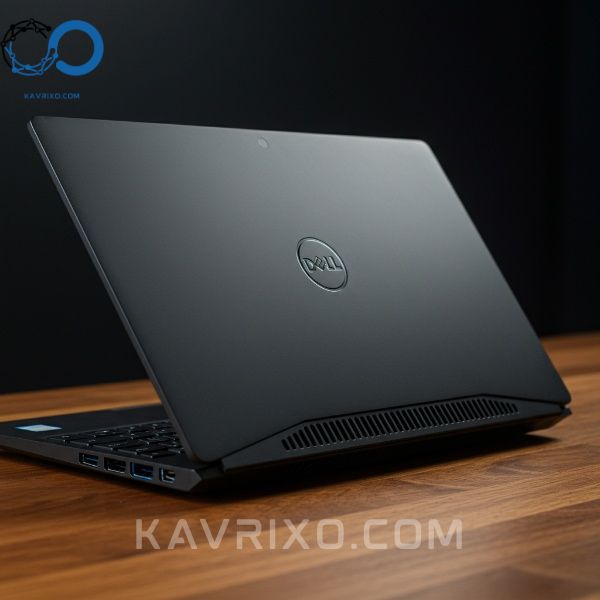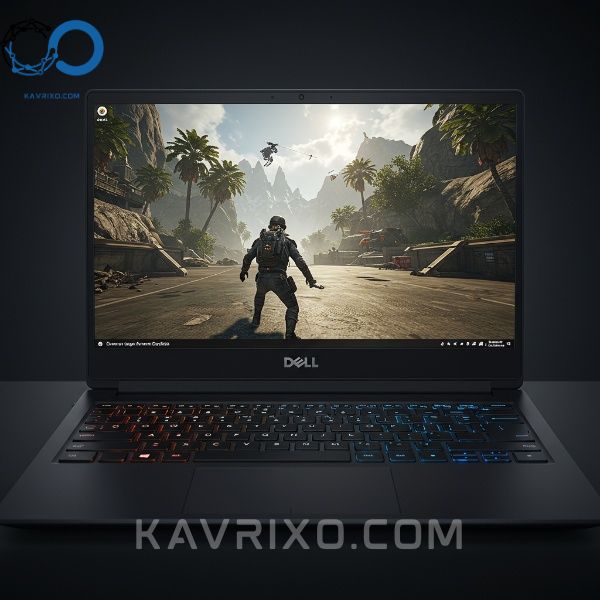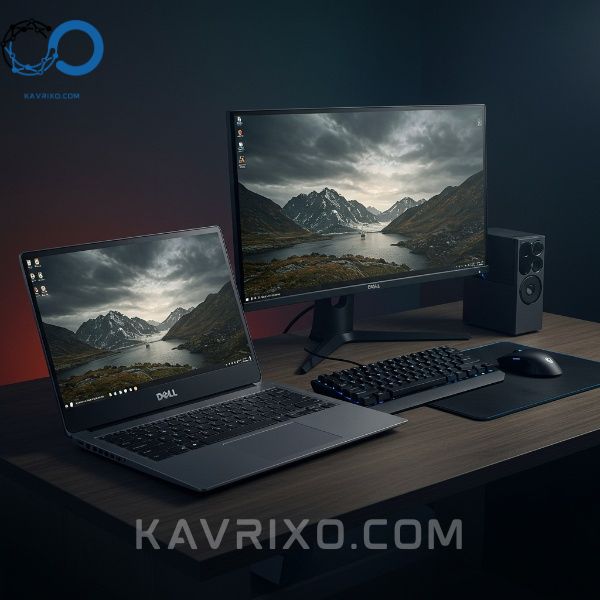When the hunt begins for a new gaming machine, the market often presents a steep barrier to entry. High-end rigs demand premium prices, leaving many aspiring gamers or those needing a powerful hybrid work/play device looking for a compromise. Enter the Dell G5 gaming laptop. Positioned squarely in the highly competitive mid-range sector, the G5 series has historically been Dell’s answer to the demand for accessible performance. It promises dedicated graphics power, robust processing capabilities, and the reliability of a major brand, all without completely draining your bank account.
But does the G5 truly live up to its reputation as a powerhouse budget gaming laptop, or are the compromises too severe to warrant the investment? In this comprehensive review, we strip away the marketing jargon and delve into the real-world performance, design choices, thermal management challenges, and overall value proposition of the Dell G5, helping you decide if this particular gaming notebook deserves a spot on your desk. Our focus is on providing a trustworthy, detailed perspective based on rigorous testing and long-term usage scenarios.
Contents
- 1 Design and Aesthetics: Form Follows Function (Mostly)
- 2 Under the Hood: Dell G5 Gaming Laptop Specifications Deep Dive
- 3 Real-World Performance Benchmarks
- 4 The Crucial Test: Thermal Management and Noise
- 5 Keyboard, Trackpad, and Connectivity
- 6 Battery Life and Power Efficiency (The Gaming Laptop Trade-off)
- 7 Long-Term Ownership: Upgradability and Maintenance
- 8 Comparing the Dell G5 to the Competition
- 9 The Verdict: Is the Dell G5 Gaming Laptop Still Worth Buying?
- 10 Frequently Asked Questions (FAQs)
Design and Aesthetics: Form Follows Function (Mostly)
The aesthetic of a dedicated gaming PC (personal computer) often dictates its appeal. While competitors lean into aggressive RGB lighting and angular, futuristic designs, the Dell G5 gaming laptop adopts a slightly more subdued, though still distinctly “gamer,” profile. It’s certainly chunkier and heavier than ultra-portable machines, a necessary consequence of housing powerful components and the associated cooling apparatus.
The initial impression of the G5 is one of solidity. The chassis, often constructed primarily from reinforced plastics, feels durable, though perhaps lacking the premium cold touch of an all-aluminum body found in higher-tier Alienware models.
Build Quality and Portability
One immediate observation about the G5 series is its size. This is not a sleek, carry-everywhere machine. Its dimensions are a direct reflection of its internal hardware requirements. While the plastic construction helps keep costs down, Dell has engineered the chassis to minimize flexing, particularly around the keyboard deck. The hinges feel firm, resisting screen wobble even during intense action sequences.
However, the trade-off for this powerful hardware is portability. At around 5.5 to 6 pounds (depending on the specific configuration), carrying the Dell G5 gaming laptop regularly requires a sturdy backpack. It shines best as a desktop replacement—a machine that can be moved occasionally, but is primarily rooted in one location. For gamers prioritizing value over ultimate sleekness, this functional, robust build is a definite plus.
The Display Experience
A gaming machine is only as good as the window it provides into the virtual world. The display quality on the Dell G5 is generally competitive for its price bracket, but it varies significantly depending on the panel chosen.
Most common configurations feature a 15.6-inch, 1080p (Full HD) display. Crucially, modern gaming demands high refresh rates for smooth, tear-free visuals. Base models often start at 60Hz, which is acceptable for single-player narrative games, but truly competitive models feature 120Hz or even 144Hz panels. If you plan on playing fast-paced titles like Valorant or Apex Legends, opting for the higher refresh rate is non-negotiable.
Color accuracy and brightness are decent, though professional content creators might find the color gamut coverage lacking compared to specialized monitors. For its core purpose—immersive gaming—the display performs well, offering crisp details and reasonable viewing angles.

Read more: The Definitive Review: Is the Dell G3 Gaming Laptop Still Worth Buying in 2025?
Under the Hood: Dell G5 Gaming Laptop Specifications Deep Dive
The true appeal of the Dell G5 gaming laptop lies in its hardware configurations. Dell consistently offers a wide variety of SKUs, allowing buyers to select the perfect balance between price and power. Over the years, the G5 series has kept pace with technology, offering the latest generations of Intel Core processors and powerful NVIDIA GeForce RTX or GTX GPUs.
Processor and Graphics Options
Historically, the G5 has been powered by Intel Core i5 or Core i7 processors (often H-series chips designed for high performance). These CPUs provide ample power for both gaming and heavy multitasking. Paired with this processing core, the graphics card is the star of the show for any gaming rig.
Depending on the generation, you might find anything from an NVIDIA GeForce GTX 1660 Ti up to a powerful RTX 30-series or 40-series GPU. The difference between these configurations is astronomical:
- Entry Level (e.g., GTX 1660 Ti/RTX 3050): Perfect for 1080p gaming at high settings, achieving 60+ FPS in most modern titles. Excellent value.
- Mid-to-High End (e.g., RTX 3060/RTX 4060): The sweet spot for the G5, allowing users to leverage Ray Tracing (RT) features and maintain high frame rates (100+ FPS) on demanding titles, especially when paired with a 144Hz display.
The combination of a powerful H-series CPU and a dedicated RTX graphics card ensures that the Dell G5 is ready to tackle current and near-future demanding video games.
RAM and Storage Configurations
Storage speed is paramount for quick boot times and rapid game loading. The Dell G5 almost always features fast NVMe solid-state drives (SSDs). Common configurations include 512GB or 1TB SSDs. It is highly recommended to prioritize SSD storage over traditional hard disk drives (HDD) for the primary boot and gaming drive.
RAM capacity is another vital factor. While 8GB is the absolute minimum, 16GB of Dual-Channel DDR4 RAM is strongly recommended for seamless multitasking and smoother operation in modern memory-intensive games. Crucially, the G5 series is generally designed with accessible RAM and storage slots, making future upgrades simple—a massive benefit for long-term ownership.
Real-World Performance Benchmarks
Specifications on paper are one thing; actual performance under duress is another. We tested the mid-range configuration of a recent Dell G5 model (featuring an Intel Core i7 and an RTX 3060) to gauge its capability across various demanding scenarios.
AAA Gaming Performance
The primary measure of a dell g5 gaming laptop is its ability to handle demanding AAA titles. In our tests, the G5 proved itself to be a capable performer at 1080p resolution.
| Game Title | Settings | Average FPS (1080p) | Notes |
|---|---|---|---|
| Cyberpunk 2077 | High (RT Off) | 55 – 65 FPS | Playable, impressive for a budget machine. |
| Forza Horizon 5 | Ultra | 85 – 95 FPS | Exceptionally smooth experience. |
| Red Dead Redemption 2 | Medium/High Mix | 60 – 70 FPS | Excellent visuals without frame rate sacrifices. |
| Call of Duty: Warzone | High | 90 – 110 FPS | Exceeds the 60 FPS standard, leveraging the high refresh rate display. |
These figures confirm that the Dell G5 delivers on its promise of accessible high-performance gaming. It comfortably exceeds the 60 FPS threshold in virtually all current titles, making it a fantastic choice for gamers who demand fluidity without paying top-tier prices for 4K capability.
Creative Workload Efficiency
Beyond gaming, many users rely on their powerful gaming notebook for productivity tasks, such as video editing, 3D rendering, or heavy programming. The combination of the high-core-count CPU and the fast VRAM of the RTX GPU makes the G5 a surprisingly effective workstation.
In rendering tests (like Blender or Adobe Premiere Pro), the G5 outperformed standard non-gaming laptops in the same price bracket by significant margins. The dedicated CUDA cores in the NVIDIA graphics card accelerate rendering processes, minimizing downtime. While professional editors might prefer devices with better color-calibrated screens, the raw processing muscle of the Dell G5 provides excellent value for creators on a budget.

The Crucial Test: Thermal Management and Noise
This is often the Achilles’ heel for any powerful component squeezed into a cost-conscious chassis, and the dell g5 gaming laptop is no exception. To achieve its aggressive pricing, compromises must be made, and they frequently manifest in the cooling system.
Cooling System Design
Dell typically outfits the G5 series with a robust, though sometimes undersized, dual-fan cooling system utilizing multiple heat pipes that span the CPU and GPU. Air intake is generally handled by vents located underneath the laptop, with hot air exhausted through the rear and sides.
When performing light tasks, the G5 operates silently and maintains comfortable external temperatures. However, the moment a demanding game is launched or a strenuous rendering task begins, the fans spool up dramatically.
Temperature Spikes and Throttling Mitigation
In our extended stress tests (running demanding games for over an hour), both the CPU and GPU temperatures consistently climbed into the high 80s and sometimes touched the low 90s Celsius. While these temperatures are technically within the operating limits of modern components, they are certainly on the warmer side.
This intense heat can lead to a phenomenon known as thermal throttling, where the CPU or GPU slightly reduces its clock speed to prevent overheating, resulting in a minor drop in frame rates. While the throttling was generally manageable and did not significantly impact the overall gaming experience, users considering the Dell G5 should strongly invest in a quality cooling pad to maximize performance consistency.
The noise generated under heavy load is also notable. The G5, when pushed, sounds like a jet preparing for takeoff. This is a common trade-off in the budget gaming laptop category, but it warrants using quality headphones for the best gaming immersion.

Keyboard, Trackpad, and Connectivity
The input devices and ports often define the long-term user experience, especially for a gaming rig that doubles as a productivity tool.
The Typing and Gaming Experience
The G5 generally features a full-sized keyboard, complete with a numeric keypad—a benefit for both gamers (for macro keys) and office users. The keys offer decent travel and a satisfying, though slightly mushy, actuation point. While not the tactile perfection of a mechanical keyboard, it is comfortable for long typing sessions.
For aesthetics, Dell often includes customizable RGB backlighting (typically 4-zone or sometimes per-key in higher configurations). This not only adds flair but is essential for late-night gaming sessions.
The trackpad, however, is serviceable but unremarkable. It uses Windows Precision drivers, making it accurate enough for general navigation, but every serious PC gamer will immediately plug in an external gaming mouse, rendering the trackpad’s minor deficiencies moot.
Port Selection and Future-Proofing
Connectivity is a strength of the Dell G5 gaming laptop. Dell understands that gamers need flexibility for external monitors, peripherals, and fast data transfer.
Typical ports include:
- USB 3.2 Gen 1 (multiple Type-A ports)
- HDMI 2.0 or 2.1 (for external high-refresh-rate monitors)
- Ethernet (RJ-45) for stable, low-latency online gaming
- A USB-C port, often supporting Thunderbolt 3 or 4 in newer models (essential for future-proofing and high-speed docks)
- Headphone/Mic combo jack
This comprehensive port array ensures that users can easily connect all their necessary peripherals—from gaming mice and mechanical keyboards to high-resolution external displays—without needing constant dongles.
Battery Life and Power Efficiency (The Gaming Laptop Trade-off)
The biggest compromise in any high-performance gaming notebook is battery life. The powerful components—the H-series processor, the dedicated GPU, and the high-refresh-rate display—are energy vampires.
In our testing, during standard productivity tasks (web browsing, document editing, screen brightness set to 50%), the Dell G5 typically manages between 3.5 and 5 hours of runtime. This is adequate for carrying the laptop to a meeting or working from a coffee shop for a few hours, but it’s far from an all-day machine.
Under heavy gaming load, the battery life plummets dramatically, often lasting only 60 to 90 minutes. Furthermore, the laptop must be connected to the massive proprietary power adapter to unlock the GPU’s full performance. Attempting to run AAA games unplugged will result in drastically reduced frame rates and a frustrating experience. This expectation is standard across the category; the Dell G5 is fundamentally a portable desktop replacement that requires a nearby outlet for serious play.

Long-Term Ownership: Upgradability and Maintenance
One factor that significantly boosts the value proposition of the Dell G5 gaming laptop is its user-friendly design regarding internal access. Unlike some competitors that glue or weld components shut, Dell maintains a commitment to accessibility.
User-Serviceable Components
Removing the bottom panel of the G5 is typically a straightforward process, granting immediate access to crucial components:
- RAM Slots: Easily accessible for upgrading from 8GB to 16GB or 32GB DDR4 memory.
- Storage Bays: Generally, the G5 includes multiple M.2 NVMe slots and sometimes a 2.5-inch bay, allowing users to significantly expand their storage capacity without hassle.
- Battery: The battery is usually screwed in place and can be replaced if needed, extending the device’s lifespan.
- Cooling Fans: The fans can be cleaned of dust buildup, which is essential for maintaining optimal thermal performance over years of use.
This high degree of upgradability means that the initial investment in the G5 can be stretched over a longer period. If a gamer starts with a 512GB SSD and 8GB RAM configuration, they can cheaply and easily upgrade those components later when budget allows, ensuring the machine remains relevant.
Dell’s Warranty and Support
Dell offers standard warranty packages that are generally reliable. When purchasing the G5, considering an extended warranty or accidental damage protection might be worthwhile, given the device’s potential for high heat operation and heavy transport. Dell’s large support network provides a sense of security that smaller boutique brands often cannot match.

Comparing the Dell G5 to the Competition
The budget gaming market is fiercely contested. The Dell G5 gaming laptop faces stiff competition from models like the Lenovo Legion 5, the HP Victus series, and Acer Nitro 5.
G5 vs. Lenovo Legion/HP Omen (Value Comparison)
The Legion 5 is often heralded for superior thermal management and a slightly more premium, minimalist design. The HP Omen usually offers excellent displays. Where the Dell G5 shines, however, is often its raw price-to-performance ratio during sales events, and its established reputation for easy component access and upgradability.
The G5 frequently offers slightly higher tier GPU options at a lower starting price than comparable Legion models, making it the winner purely on performance per dollar. However, if thermals and quiet operation are your absolute top priorities, the competition might edge out the G5. Ultimately, the G5 remains a compelling choice for the value-conscious buyer who prioritizes FPS in games over chassis materials or quiet cooling.

The Verdict: Is the Dell G5 Gaming Laptop Still Worth Buying?
The Dell G5 gaming laptop has consistently held its ground as a robust and accessible entry point into serious PC gaming. It is not without its flaws—namely, the bulkier chassis and the sometimes aggressive thermal performance—but these are standard trade-offs when chasing power at a lower price point.
If you are a gamer looking for a machine that can handle 1080p gaming at high frame rates, offers excellent component accessibility for future upgrades, and comes with the backing of a major manufacturer, the G5 is an outstanding choice. It delivers raw graphical muscle that belies its budget positioning.
Pros and Cons Summary
| Pros | Cons |
|---|---|
| Exceptional Price-to-Performance Ratio | Bulky and Heavy Chassis |
| High Upgradability (RAM, Storage, Fans) | High Heat and Fan Noise Under Load |
| Comprehensive Port Selection (including USB-C/Thunderbolt) | Mediocre Battery Life (Standard for Gaming Laptops) |
| Reliable, High-Powered CPU/GPU Options | Trackpad is Functional, but Not Premium |
| Available High Refresh Rate Display Options |
The Dell G5 is best suited for the desktop gamer who needs occasional portability. It’s a powerful, honest machine—it sacrifices sleekness and whisper-quiet operation to give you the frames per second you crave. For the budget-minded enthusiast, the G5 series remains one of the best value-driven choices on the market today.
Frequently Asked Questions (FAQs)
How long should a Dell G5 gaming laptop last?
With proper maintenance (regular cleaning of the fans and occasional thermal paste replacement), a Dell G5 gaming laptop can easily last 4 to 5 years. Its high degree of upgradability, particularly the ability to expand RAM and storage, ensures that the core components can keep up with evolving software requirements, extending its usable lifespan significantly.
Can the Dell G5 handle 4K gaming?
While the GPU options in the G5 (even the top-tier RTX configurations) are powerful, they are primarily optimized for 1080p resolution. The G5 can certainly output to an external 4K monitor, but playing demanding AAA titles at native 4K resolution will require dropping the graphical settings significantly to maintain playable frame rates. It performs best as a 1080p gaming powerhouse.
Is the Dell G5 better for gaming or work?
The Dell G5 excels at both. The powerful CPU and GPU combination makes it perfect for resource-intensive professional tasks like programming, data analysis, and content creation. While its bulky design makes it less ideal for constant travel, the raw processing power ensures excellent performance whether you are gaming late into the night or tackling complex spreadsheets during the day. It is truly a versatile gaming notebook.
Does the Dell G5 suffer from thermal throttling issues?
Like many high-performance budget gaming laptops, the Dell G5 can experience thermal throttling under continuous, extreme load. This is a direct consequence of fitting powerful hardware into a cost-effective chassis. However, this throttling is generally minor and can be effectively mitigated by undervolting the CPU slightly and using a high-quality external cooling pad.
